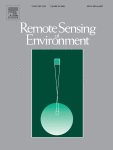View Item
- xmlui.general.dspace_homeCentros Regionales y EEAsCentro Regional Patagonia NorteEEA BarilocheArtículos científicosxmlui.ArtifactBrowser.ItemViewer.trail
- DSpace Home
- Centros Regionales y EEAs
- Centro Regional Patagonia Norte
- EEA Bariloche
- Artículos científicos
- View Item
Archetypal temporal dynamics of arid and semi-arid rangelands
Abstract
The way in which temporal dynamics structure ecological systems under the influence of a changing environment has long interested ecologists. Tackling the hierarchical structure of complex temporal patterns is a necessary step towards a more complete description of the fundamental nature of temporal dynamics in ecosystems. In pursuance of this task, remote sensing data provide valuable information to classify and describe functional features of ecosystems
[ver mas...]
The way in which temporal dynamics structure ecological systems under the influence of a changing environment has long interested ecologists. Tackling the hierarchical structure of complex temporal patterns is a necessary step towards a more complete description of the fundamental nature of temporal dynamics in ecosystems. In pursuance of this task, remote sensing data provide valuable information to classify and describe functional features of ecosystems across scales. To approach the temporal complexity of ecosystems, we proposed a stepwise procedure based on combinations of big data techniques and time series analyses applied to data series of the Normalized Difference Vegetation Index (NDVI). The aim was to classify the temporal patterns and identify
the differences in temporal dynamics of vegetation, by means of the frequency-domain and time-frequency domain components of a 20-year period of NDVI time series, respectively. In addition, we analysed the influence of climate in the temporal dynamics of vegetation. In particular, we applied archetype analysis to fast Fourier transform coefficients, using pixels as analytical units and frequencies as variables, of a large study area from North Patagonia, Argentina. Then, the most representative pixels for each archetype were used to analyse the explained variance by climatic predictor variables (temperature and precipitation) using a multiplicative model, whereas NDVI temporal dynamics was also described by means of time-frequency domain components
with wavelet analysis, respectively. Six archetypes of temporal dynamics of arid and semi-arid rangelands were identified, as well as the main patterns of their distinctive frequencies through time and spatial location, respectively. The differences in temporal dynamics among archetypes were partly associated with climate and spatial features such as topography. The procedure was sensitive to capturing these temporal patterns, even those with a low data representation or noisy series while synthesizing information for an easy interpretation. Results are discussed in the light of future opportunities to combine this kind of information with other sources of in-
formation, aiming at the development of reliable land degradation and desertification assessment and monitoring tools
[Cerrar]

Fuente
Remote Sensing of Environment 254 : Art: 11229 (March 2021)
Date
2021-03
Editorial
Elsevier
ISSN
0034-4257
Formato
pdf
Tipo de documento
artículo
Palabras Claves
Derechos de acceso
Restringido
 Excepto donde se diga explicitamente, este item se publica bajo la siguiente descripción: Creative Commons Attribution-NonCommercial-ShareAlike 2.5 Unported (CC BY-NC-SA 2.5)
Excepto donde se diga explicitamente, este item se publica bajo la siguiente descripción: Creative Commons Attribution-NonCommercial-ShareAlike 2.5 Unported (CC BY-NC-SA 2.5)

